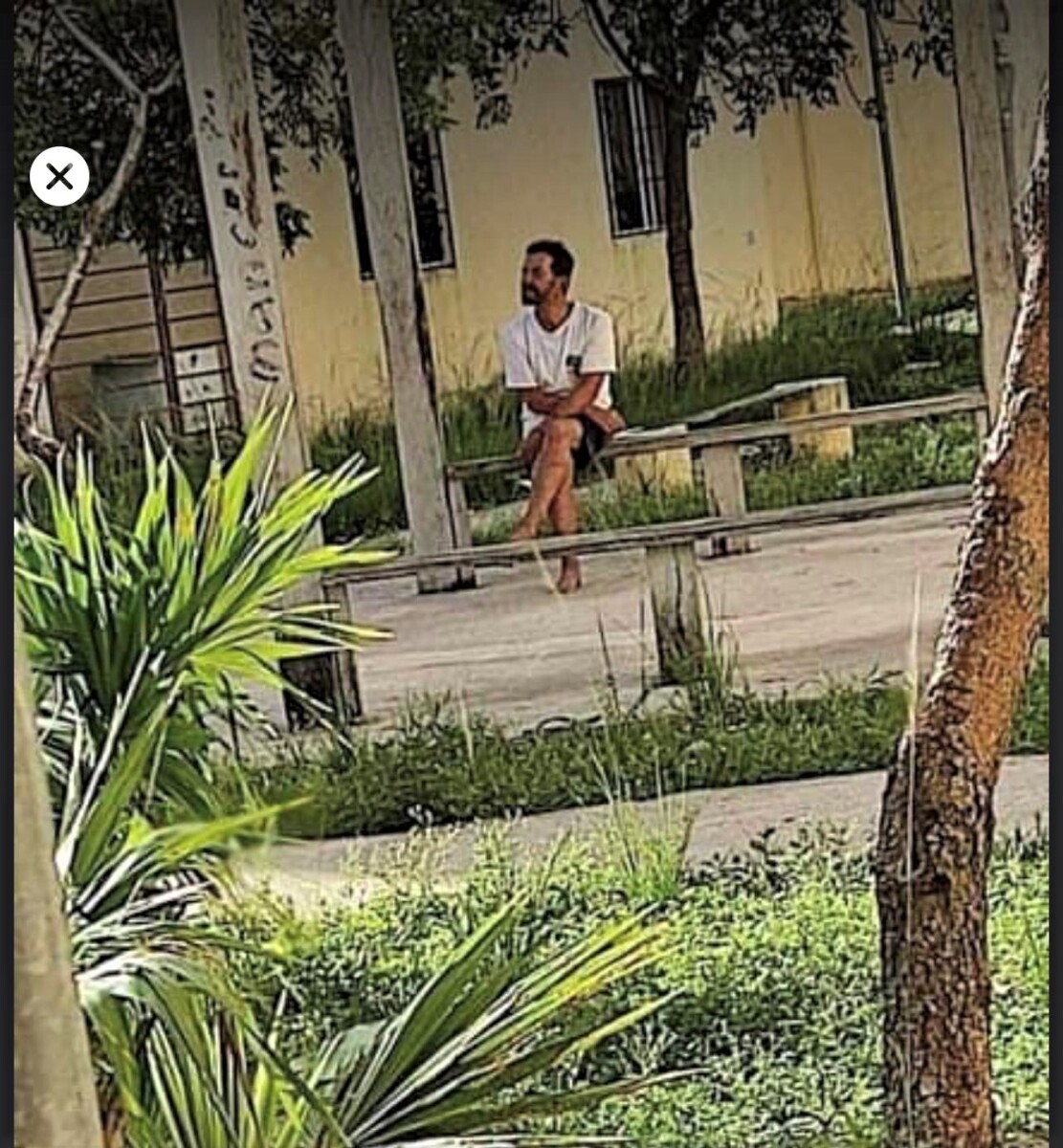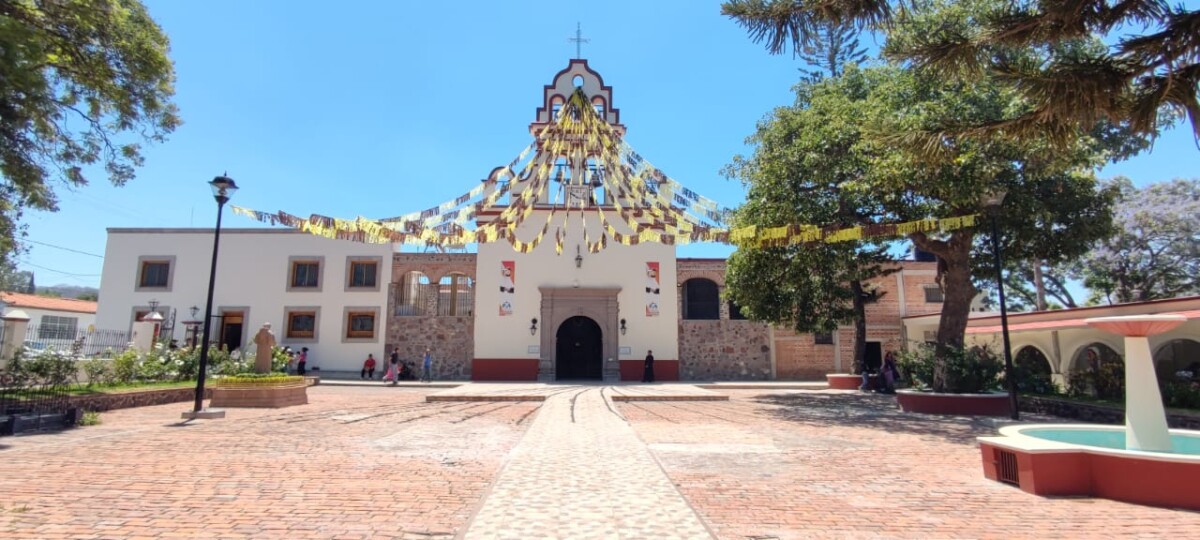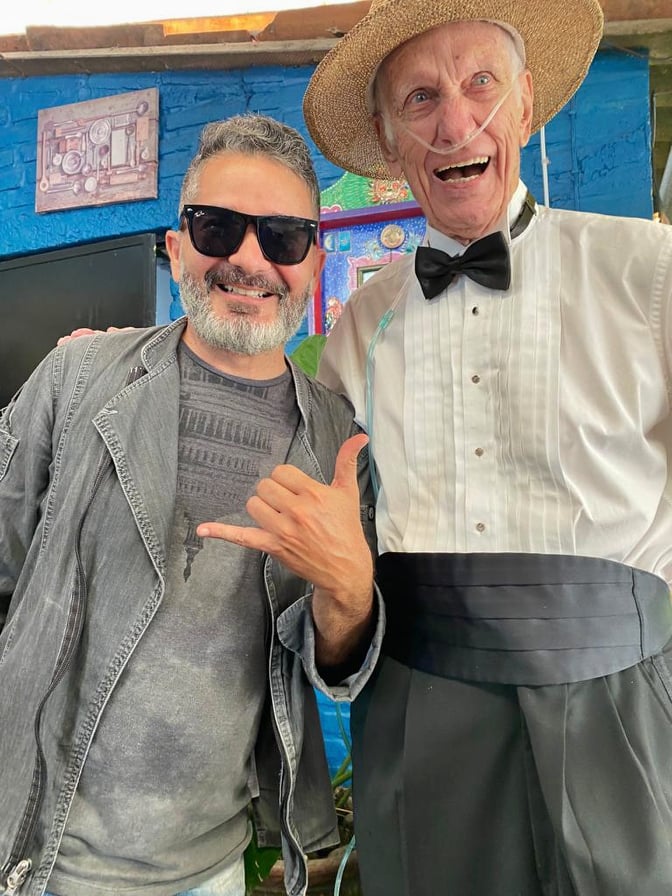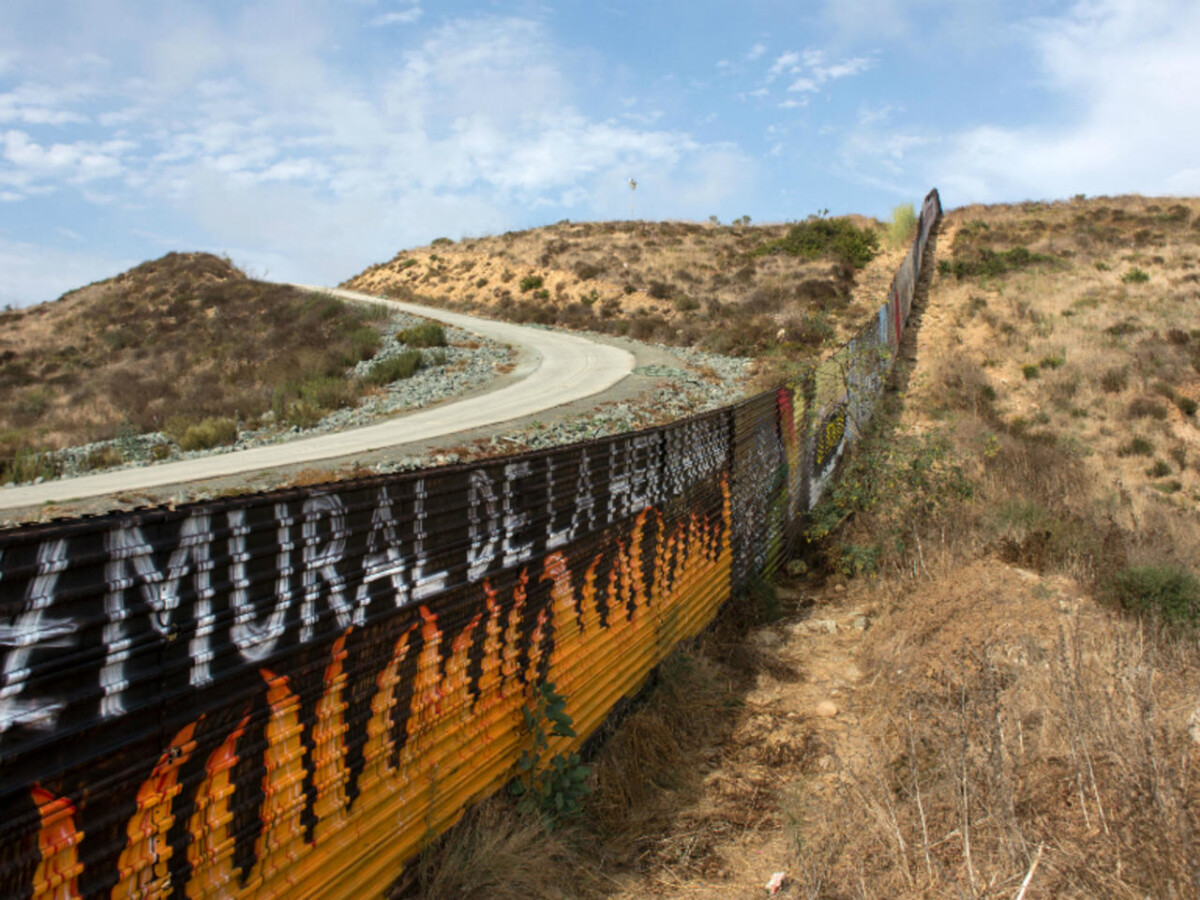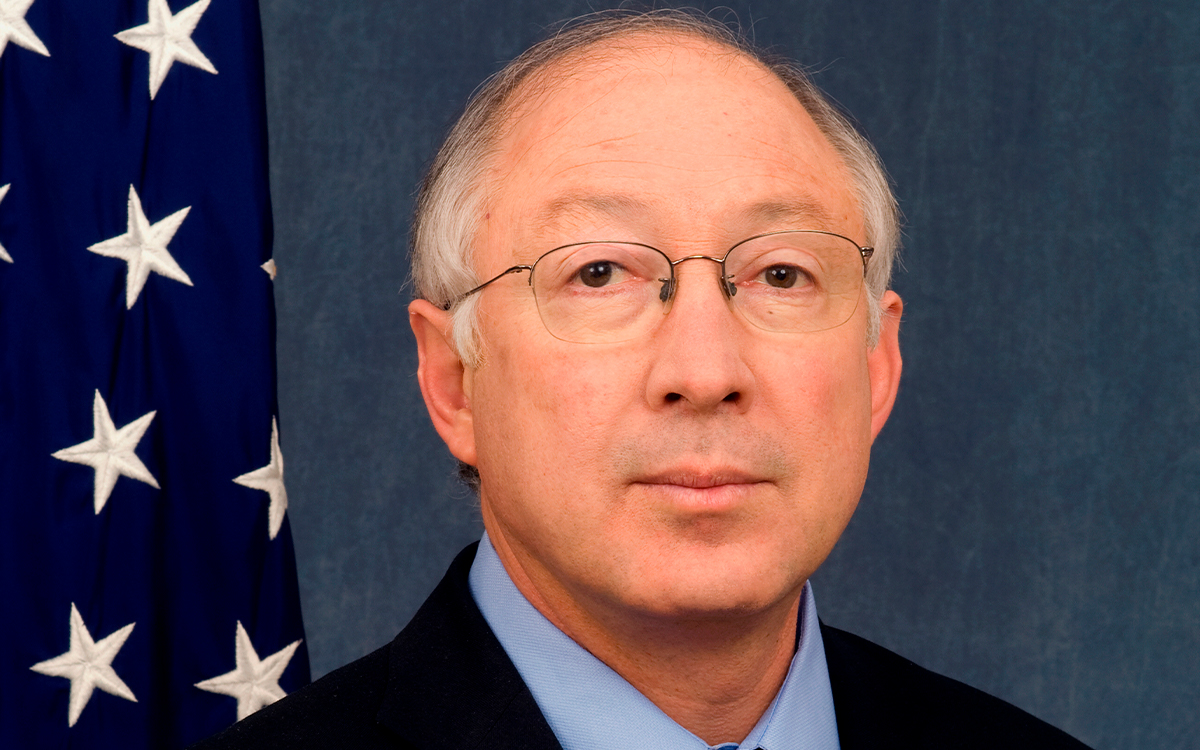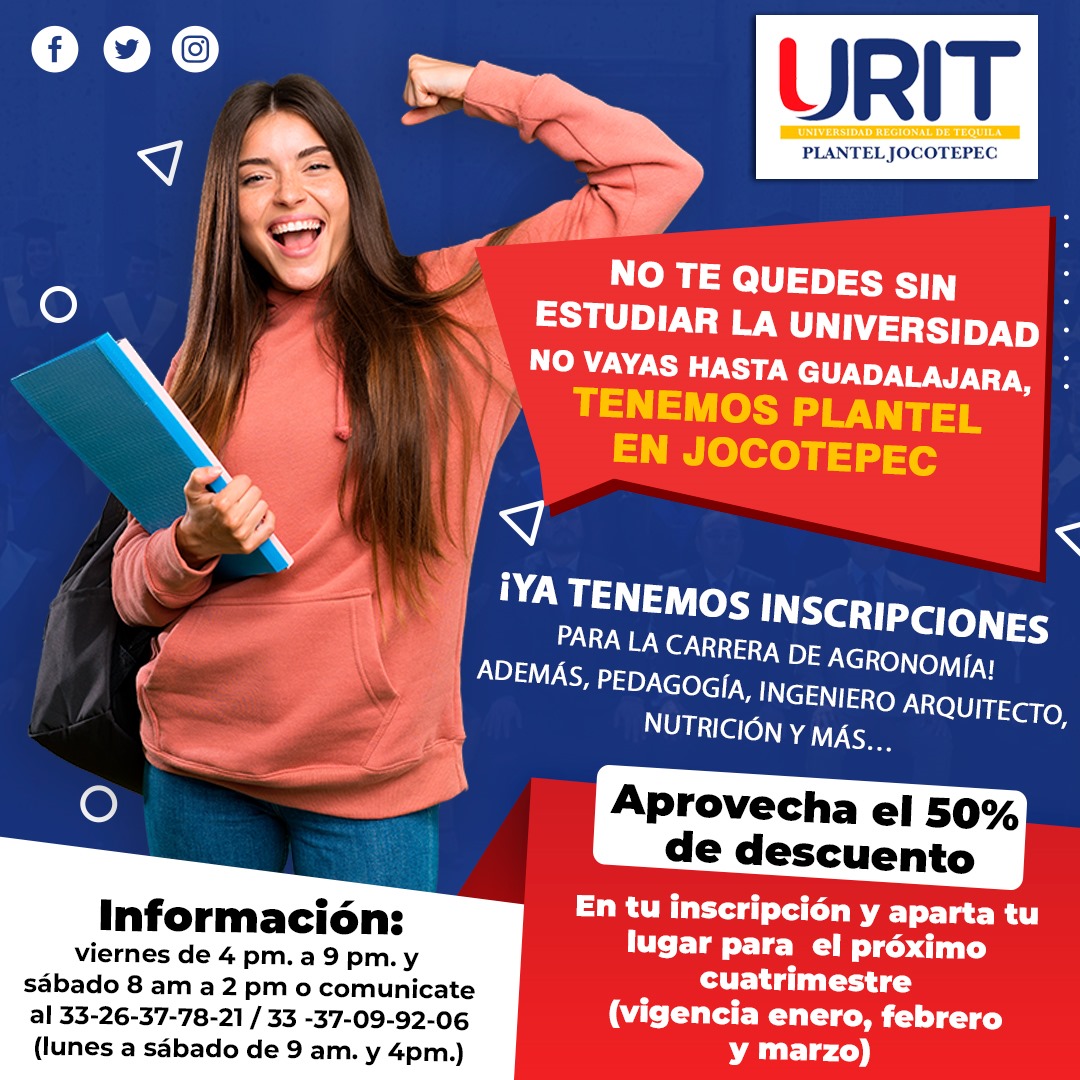expats
Difunden nueva foto y pruebas de la búsqueda de Robert Cantrell, pero aún no hay noticias
Última foto de Robert Cantrell II, sentado en un parque de la sección Tierra Maya Cielo Nuevo, municipio de Benito Juárez, en Quintana Roo. Foto: Cisco M.
Patrick O’Heffernan.- Cisco M., coordinador en Cancún de la búsqueda del estadounidense residente en Ajijic, Robert Cantrell II, ha proporcionado a Semanario Laguna una fotografía de Cantrell en un parque del municipio de Benito Juárez tomada hace aproximadamente un mes, y una fotografía de los carteles de personas desaparecidas en la pared de la plaza municipal de Benito Juárez. Cancún es la cabecera del municipio de Benito Juárez, en Quintana Roo.
Cisco declaró a Lakeside News que no se han producido nuevos avistamientos de Cantrell, pero que confía en que el hombre de 62 años sea encontrado con vida. También informó que la Fiscalía nunca ha dejado de buscar a Cantrell, contradiciendo la información facilitada anteriormente a Semanario Laguna.

La pared de la plaza municipal Benito Juárez con el cartel de Cantrell. Foto: Cisco M.
Cantrell tenía previsto volar de Los Ángeles a Cancún el 18 de junio, para ver condominios con vistas a una posible compra. Tenía previsto reunirse con un agente inmobiliario el 20 de junio, pero nunca llegó. Ese mismo día llamó a su ex mujer desde el aeropuerto diciendo que lo había perdido todo, y luego desapareció. Nueve días después, una vecina de la zona lo encontró vagando incoherentemente, sin zapatos y en ropa interior. Lo acogió en su casa, su familia se ocupó de él y lo entregó al periodista de televisión Israel Vega, cuyo programa Impacto QR suele ayudar en casos de personas desaparecidas.
Vega lo entrevistó y luego lo metió en una ambulancia que lo llevó a un hospital. A los pocos días le devolvieron a la calle porque no llevaba identificación ni dinero. Unos días después llegó a un albergue, pero se marchó y no se le ha vuelto a ver. Su hija fue a Cancún, se reunió con Cisco M. y pusieron carteles por todo Cancún y colaboraron con la Fiscalía para ayudar a encontrarlo e identificarlo.
Lo que le ocurrió a Cantrell es un misterio. En las fotos parece haber sido drogado y golpeado, y es posible que sufriera un traumatismo craneal que ha afectado a su memoria. Afirmó que fue atacado por un guardia de seguridad del hotel, pero no hay pruebas de que llegara a su hotel y no recogió su equipaje en el aeropuerto.
Según su sobrina, nadie ha intentado acceder a sus cuentas ni utilizar sus tarjetas de crédito.
Se ha establecido una recompensa de 20 mil pesos para quien lo lleve a la Cruz Roja de Cancún, sin hacer preguntas. Se pide a quien lo vea que llame a la Fiscalía General/Comisión de Personas Desaparecidas de Quintana Roo al 998-881 7150 ext. 2130 o que lo lleve a la Cruz Roja de Cancún.
Reportan avances en la búsqueda del estadounidense de Ajijic desaparecido en Cancún
Robert Cantrell II hablando con ciudadanos mientras estaba perdido en Cancún. Foto: Valerie Jones.
Patrick O’Heffernan.- La Fiscalía de Cancún ha reabierto la búsqueda de Robert Cantrell II, un estadounidense de 62 años residente de Ajijic, que desapareció del aeropuerto de Cancún el 20 de junio; se ofreció una recompensa de 20 mil pesos a quien lo lleve a la Cruz Roja, sin hacer preguntas.
Según Valerie Jones, asistente personal de Cantrell, quien ha estado coordinando la parte mexicana de la búsqueda desde su casa de Ajijic, las autoridades de Cancún no habían cooperado hasta ahora. Sin embargo, los ciudadanos mexicanos de a pie se han mostrado muy generosos con Robert y una mujer lo acogió en su casa cuando lo encontró en la calle aturdido y hambriento en ropa interior.
Pero a pesar de la generosidad de la gente, los sistemas oficiales diseñados para ayudar a las personas en apuros no consiguieron que Cantrell regresara a casa.
«Robert se ha colado por las grietas al menos tres veces en Cancún: tres oportunidades perdidas para llevarlo al consulado estadounidense y luego a casa», declaró Jones a Lakeside News. «Sólo quiero que el hombre esté a salvo y reciba el tratamiento que necesita», reiteró.
Añadió que Cantrell necesita dosis regulares de medicamentos para la tensión arterial, que al parecer no lleva consigo.
Cantrell tenía previsto volar de Los Ángeles a Cancún, el 18 de junio, para ver dos apartamentos para una posible compra. Jones había concertado las visitas con un agente inmobiliario local. Su vuelo a Cancún se canceló y American Airlines le volvió a reservar un vuelo que le llevaría de vuelta a Estados Unidos, luego a Texas y después a Cancún; un día y medio para un vuelo que habitualmente dura cinco horas.
Cantrell habló con Jones el 18 y el 19 de junio y avisó a la inmobiliaria de que llegaría el 20 de junio para las visitas. Nunca llegó.
El consulado de Estados Unidos (EE.UU.) confirmó que llegó al aeropuerto el 20 de junio, y su ex esposa en EE.UU. informó a News4JAX en Jacksonville Fl. que recibió una llamada de pánico de él diciendo que había perdido todas sus pertenencias y estaba tratando de llegar a casa. Cantrell no habla español.
Después desapareció y nunca se reunió con la agente inmobiliaria ni se puso en contacto con Jones. Un amigo cercano de Miami denunció su desaparición a las autoridades de Cancún. Nueve días después, el 29 de junio, apareció un video en el que el periodista de televisión, Israel Vega, le entrevistaba en la parte trasera de un coche en ropa interior. El programa de Vega, ImpactoQR, suele ayudar en casos de personas desaparecidas.
Según Jones, una vecina de la zona encontró a Cantrell vagando por el peligroso barrio de Benito Juárez, incoherente, sin zapatos y en ropa interior. Ella lo acogió y su familia se hizo cargo de él. La mujer era una ferviente seguidora del programa de Vega, así que le llamó y él recogió a Cantrell y le entrevistó para averiguar quién era y qué necesitaba. Vega llamó a la policía, a los servicios médicos de urgencia y a una ambulancia. Más tarde emitió la entrevista.
En el vídeo, Cantrell se mostraba incoherente y no sabía dónde vivía ni dónde estaba. Mostraba signos de haber sido drogado y golpeado, posiblemente con lesiones en la cabeza. Le dijo a Cantrell que había sido golpeado por el guardia de seguridad del hotel, robado, desnudado y retenido en una «casa negra con muchos pisos».
La ambulancia llegó y lo llevó al hospital general, donde lo trataron por deshidratación y lesiones, pero sin identificación, dinero ni seguro, el hospital tuvo que darle el alta.
«Deberían haberle llevado al consulado, pero eso nunca ocurrió», dijo Jones, señalando que pudieron darse cuenta de que era estadounidense y decía que le habían atacado. Pero en lugar de eso, lo soltaron en la calle.
Afortunadamente, un guardia de seguridad del hospital se dio cuenta de que Cantrell necesitaba ayuda, lo atendió, le dio de comer y le administró electrolitos. Pero Cantrell volvió a alejarse. Tres días después apareció en el Hogar El Torito para Alcohólicos y Toxicómanos, que se ocupó de él y prometió llevarlo al consulado. En lugar de eso, le permitieron volver a vagar por las calles.
Las madres de desaparecidos, con las que Jones se puso en contacto al principio de su búsqueda de Cantrell, han podido trazar un mapa de sus andanzas, gracias a los avistamientos de los residentes locales. Ha permanecido en un área de seis kilómetros, pero se desconoce su ubicación exacta o si sigue vivo.
La hija de Cantrell, Lauren Cantrell, dijo a News4JAX el 3 de agosto, que ella misma fue a Cancún a buscar a su padre la última semana de julio y trabajó con un hombre local que la ayudó a guiarla y le sirvió de traductor mientras colocaban volantes de persona desaparecida, en diferentes zonas de la ciudad.
«Fui a Cancún, les enseñé mi pasaporte, confirmé que era la hija de mi padre y les di una muestra de ADN por si encontraban a un desconocido o a alguien que no tuviera pasaporte para identificarlo como mi padre», cuenta Lauren. «También nos reunimos con un abogado que ayudó a presentar un procedimiento legal, que básicamente responsabilizará a las personas que dijeron que iban a ayudar a encontrar a mi padre».
Ella dijo que distribuyeron cientos de volantes a la gente local en la calle y han escuchado de muchos que sí vieron a su padre en Cancún.
Sin embargo, Jones declaró a Lakeside News que sus esfuerzos por encontrar a Cantrell se vieron obstaculizados por la familia Cantrell, porque dijeron a las autoridades de Cancún que ocultaran información a Jones, que tiene poderes notariales sobre Cantrell, y más tarde dijeron a la Fiscalía que Cantrell no quería ser encontrado, lo que les llevó a cerrar el caso. Esto no ha sido confirmado de forma independiente por la familia.
Jones también declaró que la familia dijo haber implicado en la búsqueda al Departamento de Estado, la Interpol y el FBI (normalmente la Interpol sólo expide una «tarjeta amarilla» a un país indicando que una persona está desaparecida y mantiene un banco de datos de ADN que puede utilizarse para la identificación; el FBI puede buscar a personas desaparecidas en México, pero normalmente confía en las fuerzas de seguridad locales). Jones pidió ayuda a sus senadores y a un congresista de Georgia, que intercedieron ante el Departamento de Estado para que se pusiera en contacto con las autoridades de Cancún. Lauren Cantrell también declaró a los medios de comunicación que recibió ayuda del senador Marco Rubio y que ha contratado a un investigador privado y a Texas Equusearch, una organización sin ánimo de lucro dedicada a la búsqueda y recuperación.
Según Jones, la implicación de miembros del Congreso y del Consulado de EE.UU. hizo que la Fiscalía General reabriera el caso Cantrell y reiniciara la búsqueda.
Jones también ha recibido ayuda de Yolanda Martínez, de Cruz Roja Chapala, quien se ha puesto en contacto con Cruz Roja en Cancún, para organizar la ayuda a Cantrell en caso de que alguien lo traiga y cobrar la recompensa de 20 mil pesos que se ofrece.
Lo que le ocurrió a Cantrell es un misterio. Jones tiene la teoría de que fue secuestrado, golpeado y retenido durante nueve días por una banda local o por individuos que trabajaban con un falso guardia de seguridad en su hotel, como él afirmó. También es posible que alguien se hiciera amigo suyo en el avión o en el aeropuerto y se ofreciera a llevarle al hotel, le drogara, le llevara a la zona de Benito Juárez y le entregara a un grupo que intentaría sacarle dinero. O podría haber sido recogido por un taxi deshonesto, drogado y robado.
Jones pide que cualquiera que vea a Cantrell en Cancún lo lleve a Cruz Roja o se ponga en contacto con la Fiscalía General/Comisión de Personas Desaparecidas de Quintana Roo en el 998-881- 7150 ext 2130.
Exhorta seminarista a extranjeros respetar las costumbres de San Antonio Tlayacapan
Explanada de la parroquia de San Antonio de Padua. Foto: Arturo Ortega.
Sofía Medeles.- Hasta agresiones verbales han llegado a recibir en la parroquia de San Antonio de Padua, provenientes de extranjeros que exigen se cambien las costumbres de las fiestas patronales, según informó el seminarista Francisco Javier Gutiérrez.
El seminarista declaró que desde hace varios años reciben quejas y comentarios con palabras altisonantes por parte de extranjeros, que exigen se dejen de usar los “cuetes” o cohetes y los campaneos de la mañana, porque les molesta.
“Este año hubo un incidente donde una de las personas que se queja de esta situación, dejó propaganda donde expresan que quieren que se deje de lado la tradición, con palabras que lastiman la fe y nuestra persona como cristianos. La propaganda se dejó en cada banca, y varias sobre el altar. Después, la mujer de origen norteamericano comulgó y al tiempo, se agachó para dejar varios de estos (letreros)”.
Francisco consideró que no le parece prudente que los extranjeros que habitan la zona no respeten las tradiciones, en la mayoría de veces, asegurando que toman esta actitud debido a que los perros se asustan.
“Según ellos, tenemos que cambiar nuestras tradiciones que se realizan desde nuestros ancestros para que ellos se sientan cómodos. Y encima en nuestro país, ser ofendidos por otros. Parece ser que los extranjeros quieren imponer en nuestro propio país, argumentando que asustan a los perros, cuando en general, hay vidas humanas siendo lastimadas de muchas maneras, que no se toman en cuenta”, concluyó.
Se une Chapala al homenaje a los caídos en el ‘Memorial Day’
En el acontecimiento se colocaron ofrendas florales. Foto: Cortesía.
Redacción.- Estadounidenses y canadienses asentados en el municipio, además de autoridades de Chapala, realizaron un homenaje en conmemoración del «Memorial Day» o Día de los Caídos el 29 de mayo, en el panteón municipal de Chapala.
Durante el acto, se recordó el valor y la valentía de los caídos, así como su dedicación y servicio a sus respectivos países.
El evento contó con la presencia de veteranos estadounidenses y canadienses, así como con la participación de la Legión Americana. Además, la Cónsul de Canadá, y representantes del gobierno municipal de Chapala.
Opinión: Mirando la vida en la Ribera
Por Patrick O’Heffernan.
En la columna recientemente publicada en lakesidenews.com escrita por Greg Custer, el propietario del sitio web Choosing México, que habla sobre la conmoción de su regreso a su (y mi) estado natal: California, y descubrir qué ha cambiado tanto para mal que ya no lo considera su «hogar».
Escribo esto desde California, mientras estoy de vacaciones para ver a mi hija. Es chocante: 250 dólares por una cena de fideos para cuatro personas en una cafetería local; un bungalow de dos dormitorios de 50 años por 1.2 millones de dólares; un hombre asesinado a tiros esta mañana por pintar un graffiti en una heladería; 20 asesinatos al mes desde enero; una hora en coche para ver a un amigo y luego otra hora para ver a otro amigo en la misma ciudad, con seis dólares de gasolina. Y así una y otra vez.
A nivel nacional, las legislaturas estatales aprueban docenas de proyectos de ley para asegurarse de que la gente no pueda votar y lo llaman «asegurar el voto»; los mismos estados aprueban leyes para hacer que algunos servicios de salud sean ilegales para algunos niños y todas las mujeres; hay una facción del Congreso decidida a destruir la economía de la nación y del mundo, si no consiguen despojar a la clase media y a los pobres de las prestaciones médicas para poder dar miles de millones a sus donantes corporativos; un tercio de los ciudadanos que creen que Estados Unidos debe ser una «nación cristiana» y están dispuestos a echar por la borda una Constitución que el mundo venera, para salirse con la suya, mientras ondean banderas nazis.
Greg tiene razón, al menos para mí, no se puede volver «a casa otra vez». Al menos para los californianos, el hogar ya no existe. No, no estoy añorando los «viejos tiempos» de las ligas menores y los descapotables que recorrían el boulevard de Hollywood los viernes por la noche; no fueron buenos tiempos para todo el mundo.
Lo que echo de menos es la creencia en un futuro brillante para todos, un país del que sentirse orgulloso y un sentimiento de bienvenida. Ahora lo que hay es maldad y capitalismo desbocado en muchos sitios. ¿No me creen? Date una vuelta por Los Ángeles y mira las 60 mil personas sin hogar que viven en las calles, muchas de ellas trabajando por un salario mínimo que no llega a la pobreza y con un precio de mil 200 dólares al mes en infraviviendas.
México tiene sus problemas. Basta con intentar conseguir agua corriente en la zona de El Tempisque o en el poniente de Ajijic. O hacer cola para pagar los impuestos de la propiedad, sólo para que la oficina cierre temprano sin ninguna razón. O cambiar otro juego de amortiguadores de tu coche por… bueno, ya conoces la lista.
Pero tengo un sentimiento de esperanza. Si un negocio cierra, el propietario abre otros dos. Si necesitas ayuda, tres personas te la ofrecen. Mexicanos y expatriados se unen para enviar a la universidad a un estudiante de arte en ciernes.
El espíritu de Neill James sigue vivo, a pesar de los problemas, el tráfico y los apagones. Estados Unidos está cada vez más consumido por el odio y la desesperación -no todo el mundo, en todas partes-, eso nunca ocurrirá. Pero no veo que allí llegue un futuro optimista durante generaciones. Aquí, cada generación espera algo mejor, y trabaja por ello.
Estados Unidos parece haber adoptado como lema «es mío, ahora lárgate o te pego un tiro». En México es «el espíritu de ¿puedo ayudarte? Eso sí se siente más como un hogar.
Casa Domenech officially opens at LCS with a grand party
Casa D owner Ray Domenech and long-time fan celebrate the Grand Opening of Casa D LCS.
Patrick O’Heffernan (Ajijic JAL). It’s official! The new, improved and larger Casa Domenech launched at the Lake Chapala Society with a packed – but Covid safe – Grand Opening Saturday. The community Ray Domenech has built for years around his original location – fans and musicians – turned out in force.
Casa Domenech is now in the space at the LCS formerly known as Angelina’s which was operated by Ray Domenech for lunch and breakfast. Casa Domenech is now open for breakfast lunch and dinner and features music most days for lunch and dinner.
The Grand Opening followed a short “break-in” period in which Casa D was open for food and music but had not yet been officially inaugurated. Ray Domenech wanted to make sure the operation was smoothed out and working perfectly, which it was by Opening Night. The celebration also showcased the advantage of moving Casa D from its original location in a small restaurant in West Ajijic to LCS where seating was outdoors and could spread beyond the immediate restaurant into the adjacent courtyard.
“I love the new space where we can continue to create food, music and community like we have for five years, only with more people. Many thanks to LCS for inviting us,” Domenech told Laguna.
According to Domenech, he can produce events for well over a hundred people at LCS. And the different seating locations give diners the option of being close to the music, or far away for conversation. And of course, special events like the recent Casa Domenech 5th Anniversary party in the LCS courtyard are always possible.
Music was in abundance, headlined by the Aloha Rock band and joined by the duo Old Souls – Scott Henrich and Yvonne Watterson, singer Barbara Sangrey and folksingers Mike and Terrie. And of course Ray Domenech sat in with his guitar whenever he could.
Casa D at LS is open for breakfast, lunch and dinner. Dinner served at 4:30 pm until 8 pm. Enter through the library entrance to LCS for dinner.
Opinión: Patrick O’Heffernan
L.A.
Patrick O’Heffernan.- Returning to NOB for a vacation after two years away, more or less, is a bit of a shock. NOB for me this week has been California – Los Angeles, a drive partway up the coast, and the SF Bay area. But LA had the greatest impact – as it always does.
The first impact was sticker shock. $3.00 cookies! $14.00 sandwiches ($8.00 at Subway, but still). An ordinary sit-down lunch for two at an ordinary sidewalk café in the Westside was $35.00 – plus tip and parking! You know how many lunches that will buy in Ajijic, even on the Expat economy, and even more at your neighborhood taqueria.
Covid shock came next. It seems to be more serious here too, with high case numbers, antivaxers, and breakthrough infections. I hosted a dinner for musicians and bands that I have known for years, and one of my dearest friends, a popular pop singer, could not attend because her boyfriend had a breakthrough infection of Delta after two shots. They had stayed home for months when she performed at just one concert and he attended – masked, and vaccinated – he got infected. (he is OK now, but in an abundance of caution, they did not attend the dinner, although everyone there was vaccinated and had a negative test.)
Now, LA is not California, nor the US for that matter, but it is my hometown, so the skyrocketing rents, grocery prices, energy prices, cellphone costs, and restaurant and entertainment prices, and homeless tent cities were a shock, although I have been keeping up with them online. Makes me appreciate Ajijic and Lakeside even more.
On the positive side LA reminded me of customer service – a shocking concept somewhat in vague in Mexico. I had to go to the phone store and the assistant manager came to me immediately to help me and took care of my transactions quickly. No waiting, no calls to HQ, no redtape. When she did not have the part I needed she called another store and said it would be ready for me when I go there. It was – no waiting. Same courtesy in the bank – opening up new tellers when a line got to be more than three people. Credit cards are fine everywhere. Bank transactions took place at the teller – no approval from Mexico City needed, the only i.d. I needed from everything was my CA drivers license – and no copies necessary and nothing got stamped and signed. That was a shock.
And, also on the positive side, I found myself back in LaLa Land – the land of movies and entertainment. Huge billboards all over touting shows for Emmy and Oscar awards. Skyscraper-size ads on Hollywood Blvd and other locations for rock bands and TV stars. But most memorable of all, as I reeled at $3 cookies, were the faux soccer bleacher displays set up in malls importuning Academy members to vote for Ted Lasso in the Emmy Awards, for which it has 20 nominations. And just to make sure you didn’t forget, the attractive young woman or man staffing the promotion gave you a pink box of shortbread cookies- free.
Free shortbread from a TV show and $3.00 cookies from the store. That’s LA. It is fun to be here on vacation, but Ajijic – and 25-cent galletas – are home now. See you all next week.
The Texas governor says he will build the wall along the Mexican border
Wall along the border with Sonora.
Patrick O’Heffernan Ajiic. JAL. Citing a “crises at the border”, the Republican governor of Texas, Gregg Abbot, announced that Texas will build a wall between his state and Mexico, using state taxpayer funds and crowd-sourced money raised online.
Human rights and immigration advocates responded quickly saying that the only crisis on the border is the GOP’s lack of a coherent strategy and grandstanding stunts, adding that he does not have the authority to build a border wall.
“I will announce next week the plan for the state of Texas to begin the border wall,” said Abbot at a border security “summit” in Del Rio last week. This week he released details of a plan to use $250 million of state funds for a project manager and preliminary studies while he raised additional billions through a crowd-sourcing website.
His announcement did not address the question of how a state-operated wall would interface with Federal Immigration and Customs, since the state has no Constitutional role in visas, international trade, customs or border crossings. Critics pointed out that if completed, the wall could be an impediment to the thousands of tourists, US and Mexican citizens, and commercial trucks crossing the border in Texas every day, encouraging them to use New Mexico crossings instead of Texas facilities like Laredo.
He also did not address questions about how the state was going to force private landowners to give up their property for a wall when the Federal government was mired for years in court battles, which were declared moot when President Biden cancelled the wall on his first day in office.
New Ambassador to Mexico nominated by President Biden
Ken Salazar.
Patrick O’Heffernan Ajijic (JAL) US President Joe Biden has nominated Ken Salazar, a former U.S. Senator from Colorado, to serve as the next ambassador to Mexico. The nomination has to be approved by the full Senate after hearings.
Salazar, 66 and currently in private practice as a lawyer, served as Secretary of the Interior under President Barack Obama and in the U.S. Senate for a term. He has no prior diplomatic experience, but played an important role in negotiating the cross-border management of the Colorado River with Mexico.
Although a Latino-American and fluent in Spanish, his heritage traces directly to Spain, and not to Mexico. His nomination was applauded in most quarters, although his past associations with oil companies has drawn criticism from environmental organizations and his support for fracking contradicts Mexican policy against it.
A Co-Chair of the President’s election campaign, will be the Biden’s point man in Mexico to move forward on a day-to-day basis the initiatives with Mexico launched by Vice President Harris in her meeting with AMLO last week , especially policies to deal with an influx of migrants at the U.S.-Mexico border.
INM detains legal Expats at checkpoints if they don’t have original documents
INM.
Patrick O’Heffernan, Ajijic, JAL. Spencer McMullin of Spencer’s Office S.C. Abogados posted a warning that INM (Instituto Nacional de Migración). was setting up checkpoints throughout Mexico to confirm Expat’s residency status. According to the post, immigration has changed its policy and is now detaining non-Mexicans legally in the country who are not carrying their original immigration or residency documents on them.
This is apparently in response to INM’s analysis that many people are here with expired tourist cards and not returned home prior to their expiration due to Covid travel restrictions. So far no checkpoints have been seen in Lakeside, but reports have been posted in Facebook groups that cars have been stopped on the way back from Guadalajara through Jocotepec.
The post warns that if your papers have expired you should stay home and if you are legal you should always carry your original documents such as your Temporal, your Permanente or a valid visa, especially if you are traveling to the beach. This may confuse some people who have obtained certified copies of their immigration cards and carry them for safety. The advice is to carry the original and save the copies at home.
Laguna verified the post with Spencer by chat through his office, receiving a message that some Expats have been detained, although it is unknown if it was either through errors or by inexperienced people. Other posts on social media have verified the problem. As of Wednesday May 19, the INS website section covering immigration documents for non-Mexicans was not loading, although various posts on social media claimed they were able to verify the policy with INS.
© 2016. Todos los derechos reservados. Semanario de la Ribera de Chapala


